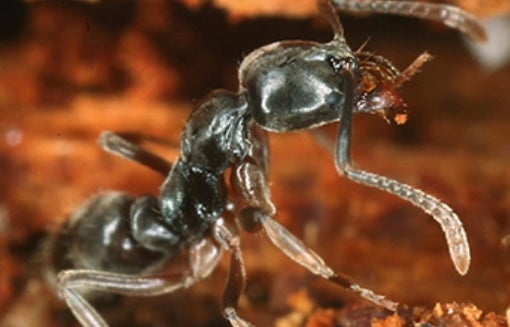ARTICLE AD BOX
Neighborhoods across the Southeast need to be on the look out for venomous Asian needle ants this summer - and be warned its sting can be deadly.
People may suffer from an allergic reaction after a sting that can send them to the hospital without treatment. Symptoms can include difficulty breathing, a weak or rapid heart rate, vomiting, hives, fainting and tongue swelling.
"We are now considering it a medically important pest," Dan Suiter, an Orkin distinguished professor of Urban Entomology at the University of Georgia, told Fox Weather this week.
He said that the number of calls from individuals who suffered from the reaction, also known as anaphylaxis, have prompted the shift. Last year, Suiter said he received three such calls.
"It gets a little bit more serious when the sting of an insect can be life-threatening to people who suffer anaphylaxis," he explained.
The species, which is native to Asia, has been found in the U.S. for 90 years, but its population has exploded recently. Just how many of the ants there are today remains unknown, but they have historically been found in forest areas. They’re found largely in the eastern U.S., including the Carolinas, Georgia, Indiana, and Alabama. However, have also been sighted as far north as New York and Washington.

The ants’ stings “work to their advantage in gaining new territory,” according to the American Association for the Advancement of Science. They are not picky about where they live, and can thrive in forests and urban environments. In neighborhoods, they nest under doormats or in potted plants, with colonies ranging from a few dozen ants to as many as a few thousand. They eat termites, but also go for human garbage.
“This behavioral versatility is allowing the Asian needle ant to move into forests, rural areas, and urban environments at the same time. And because it can tolerate cooler temperatures, it could spread into a broad range of territory,” the association’s Dr. Mary Bates said.
While the ants aren’t naturally aggressive, they may sting if they end up in clothes or if someone places a hand on top of one, researchers at Clemson University noted.
.jpeg)
“During their swarming season, the chance of receiving a random sting increases because the females are more likely to land on an individual or get trapped in clothing. Often people are stung when brushing an ant off their skin. If an ants lands on you, it is best to flick it off, rather than brush it off,” they said.
The swarming season typically stretches from the spring to late summer.
If someone has been stung, there’s no way to predict who will experience anaphylaxis and who will not. However, people who have reacted adversely to other insect stings and carry an Epipen should remain alert. A sting from the Asian needle ant is somewhat more likely to cause an allergic reaction than the venom in a honey bee’s sting, according to North Carolina State University.
While the pests are tiny, the risk of a sting can be mitigated by cleaning up and keeping wood dry and off the ground.
“During swarming season, it commonly enters homes and other buildings. To reduce the chance of them coming in from their outdoor habitats, well-fitted screens on doors and windows will be helpful,” the Clemson researchers added.









 English (US) ·
English (US) ·